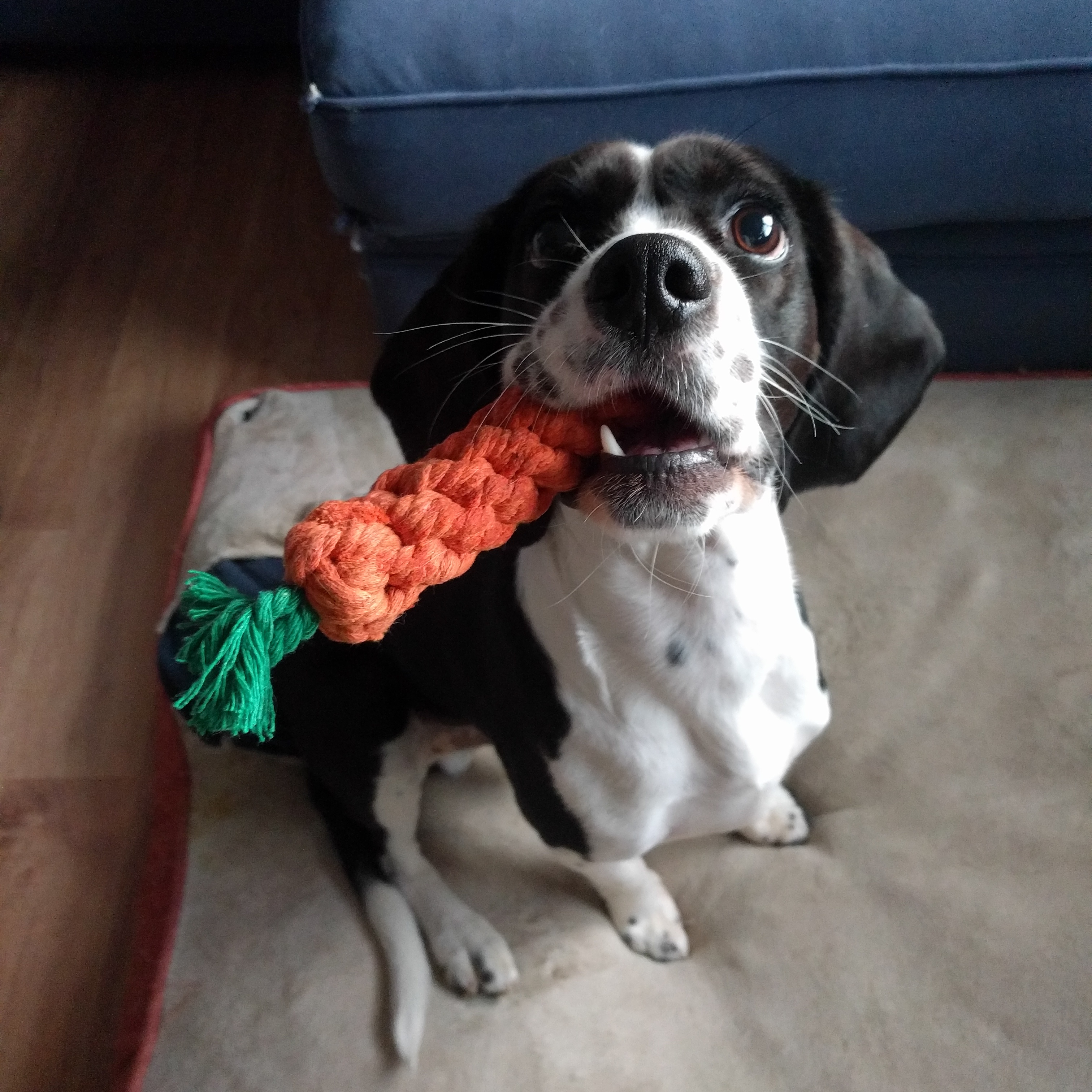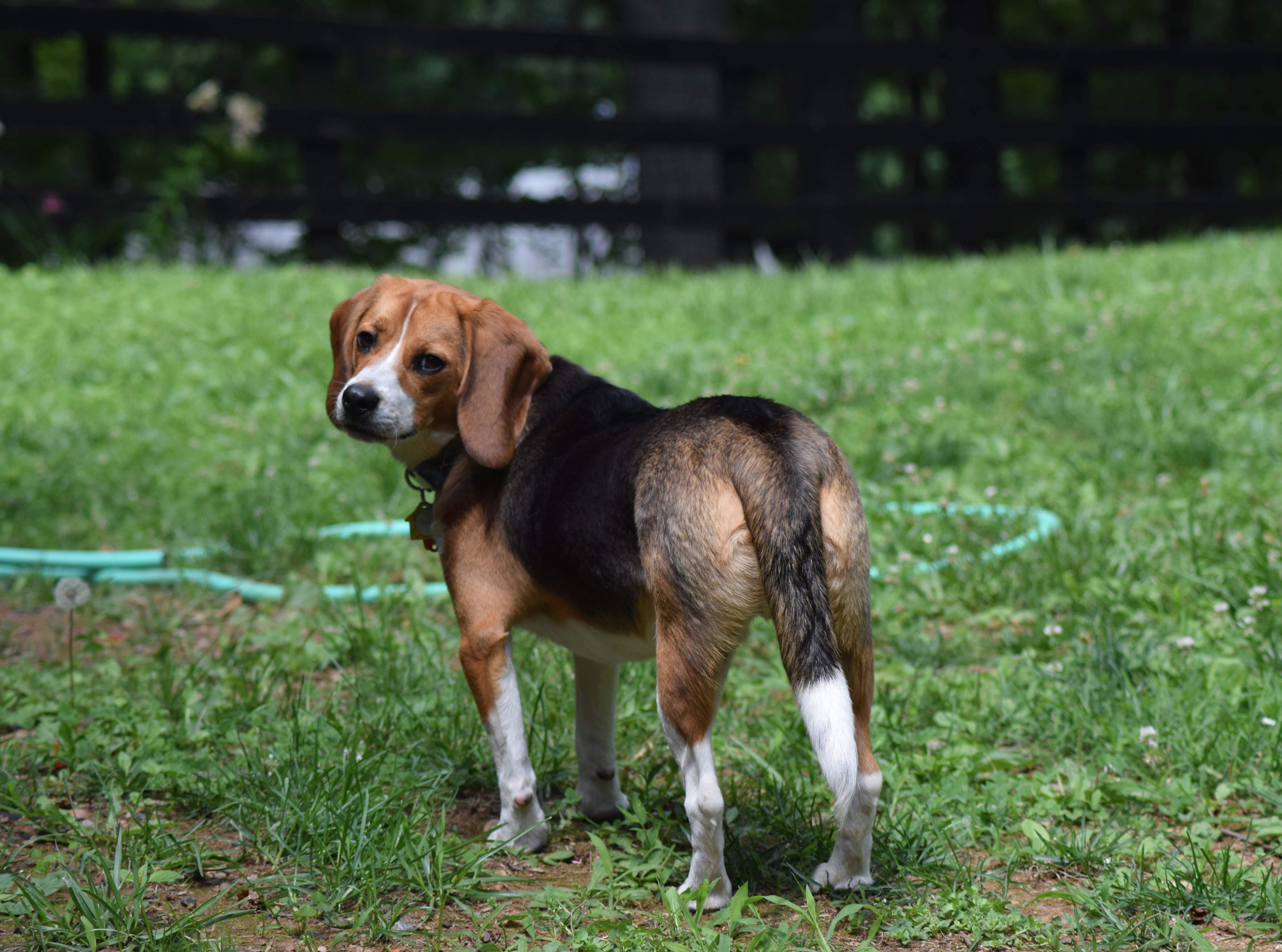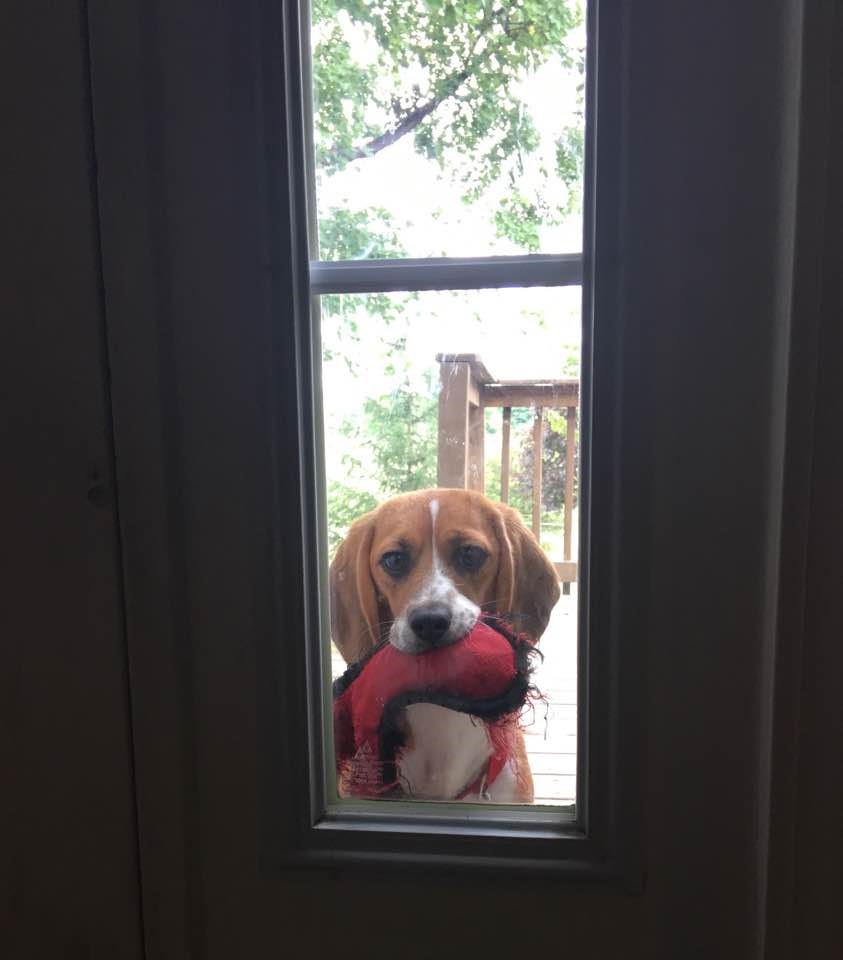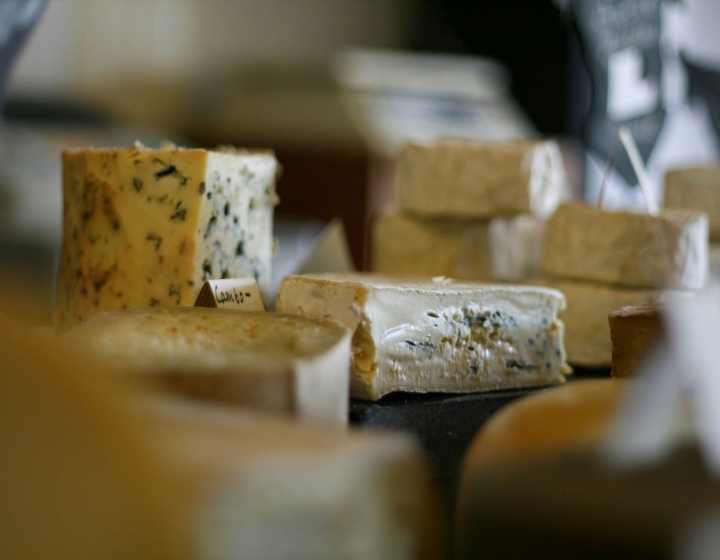IVF puppies: Where are they now?
In 2015, the College introduced the world to seven very special puppies: They were the first dogs born as the result of vitro fertilization. Three separate pairs of beagle and cocker spaniel parents contributed embryos, which were transferred to a fourth female. Genetic testing confirmed that all three breeding pairs contributed at least one puppy to the litter, but the surrogate mom did not.
The keys to successful canine IVF eluded scientists for decades because of unique features of canine reproduction. It took a team of veterinary researchers from Cornell and the Smithsonian Conservation Biology Institute to crack the code. The process can now be used to rebuild populations of endangered canine species.
March 23 is National Puppy Day, so an update on the magnificent seven seems in order. The puppies are actually young adults now, and will turn two this summer. All seven were spayed or neutered before they were adopted. Color-coded at birth so they could be easily identified, most—but not all—of the puppies have been renamed by their owners.
Dr. Alex Travis, who led the IVF project at the college’s Baker Institute for Animal Health, has two of the puppies: Red, a female beagle, was and still is named for the “Cornell Big Red” sports team; and Green, a male beagle his children renamed Jubs. Asked what Red and Jubs enjoy most, Travis sighs: “The thing they like best is chewing on just about anything that we don’t want them to chew on.”

Jennifer Nagashima, an IVF team member who was a Cornell graduate student at the time, went home with Cannon (Purple), a male cocker spaniel/beagle cross named for the late Patrick Concannon, a Cornell scientist and pioneer in dog and cat reproduction. Nagashima calls Cannon “a cannonball of energy. His favorite pastimes are running for the sake of running, barking at geese and playing tug of war. He has a hilarious fear of bubblegum: he stares at the bubble as if it's an alien coming out of your face. He's also a huge snuggle bug and always wants to be touching you or resting his head on your arm when he naps.”

Yellow, a male beagle, was originally nicknamed Pete, as in “petri dish.” He lives with IVF team member Nucharin Songsasen, a research scientist at the Smithsonian, who renamed him Buddy. He is “a very happy dog who loves to play with humans, dogs and cats alike,” says Songsasen. “He is extremely smart; he was house trained in two weeks. Now he rings a bell when he wants to go outside. Buddy loves hiking, playing in snow, paddling trips and wrestling with his step sister, Aimee.”

Cornellia (Black), a female beagle, is nicknamed Nellie. Her owner, who prefers to remain anonymous, says Nellie is “a very sweet and sassy little girl. Her favorite activity is going out for a walk or drive. She loves people and other dogs. She is a bundle of joy! We talked about changing her name but that just seemed silly since she knows her name and ‘Nellie’ suits her.”

Blue was called Beaker at Cornell, but his adoptive family changed his name to Kiwi. A male beagle, he lives with Travis lab scientist Roy Cohen, whose children report that Kiwi is “a very happy, friendly and playful dog that can't seem to control his wagging tail every time he hears his name, even when he is asleep! Except for food, the thing that Kiwi likes best is playing chase with our other dog, Lichi. Once he has exhausted himself, Kiwi is always ready to catch a nap next to the fire place.”
Ivy LeFleur (Zebra) is a female cocker spaniel/beagle cross; her name (“Ivy F.”), is a play on IVF. Susie Ellis, another Smithsonian researcher, adopted Ivy and calls her “a terrific member of the family. She has a sweet, loyal nature. Ivy enjoys being inside, but prefers to be outside to help ‘Dad’ when he works on the tractor. After a long day, Ivy enjoys cuddling with Dad or Mom and her favorite (mostly eviscerated) toys, the Grinch and the Cat in the Hat. She has the softest ears of any animal on the planet.”





